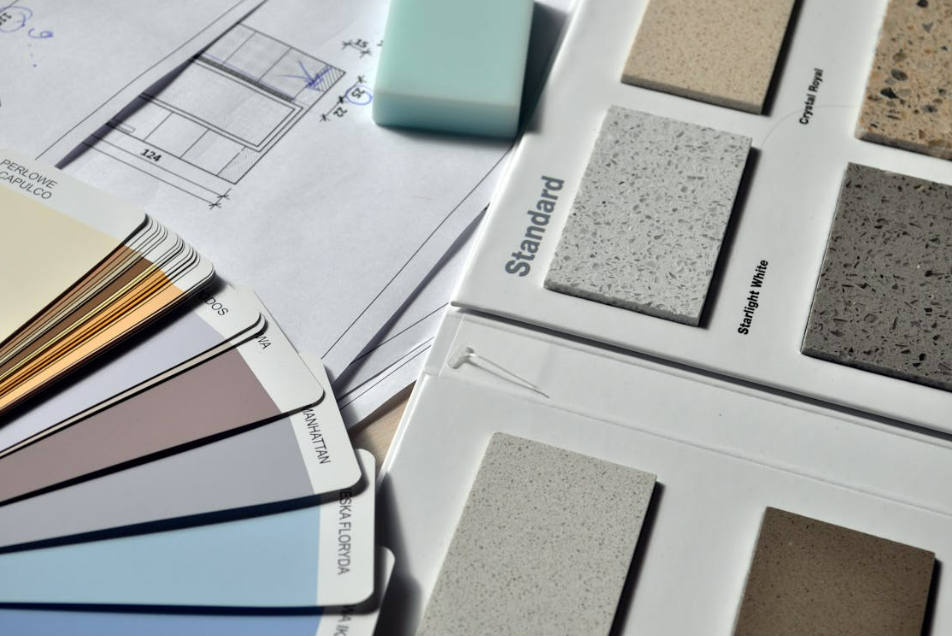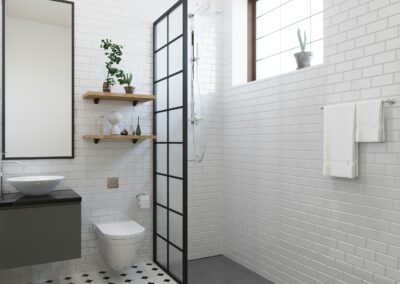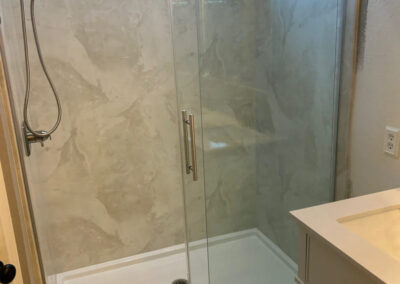Remodeling your bathroom is an exciting project, offering a chance to enhance both its functionality and aesthetic appeal. While elements like layout and fixtures typically dominate the conversation, one often overlooked aspect is the psychological impact of color choices, especially in regard to paint and tiles. These simple yet powerful design elements can shape the atmosphere of the space, influence mood, and even improve accessibility for all users. In this post, we will dive into the importance of selecting the right colors for your bathroom remodeling project, particularly when considering accessibility and psychological well-being.
The Psychological Power of Color
Colors have long been known to influence our emotions and perceptions. In fact, studies show that colors can have a significant effect on mood, energy levels, and even physical responses. When it comes to bathrooms, a space we often retreat to for relaxation and self-care, choosing the right hues can create a peaceful sanctuary or an invigorating space to start your day.
- Calming Colors: Soft, neutral colors like light blues, soft greens, and pastel shades promote relaxation and calmness. These colors are ideal for creating a spa-like environment, perfect for those seeking a stress-relieving atmosphere. Lighter shades, such as pale aqua or soft gray, can also make the space feel larger and more open, an important factor in bathroom accessibility.
- Energizing Colors: Bright, bold colors like yellow, orange, or red can be invigorating and energizing. These hues can be excellent for bathrooms used for morning routines, helping you feel awake and revitalized. However, use them sparingly. Too much of these intense colors can feel overwhelming in small spaces.
- Neutral and Earthy Tones: Shades like beige, taupe, and earthy tones create a grounded and warm environment. These colors can add a sense of stability and serenity, especially for those who want a more subtle and timeless design. Pairing these tones with natural materials like wood or stone tiles can further enhance the bathroom’s ambiance.
Color Choices and Bathroom Accessibility
When remodeling a bathroom with accessibility in mind, color choices do more than set the mood—they also play a crucial role in ensuring safety and functionality. For individuals with visual impairments or elderly users, the right contrast between surfaces can be a game-changer in navigating the space comfortably.
- High Contrast for Better Visibility: High-contrast colors, like dark tiles with lighter grout or white walls paired with dark accents, make it easier for those with low vision to see and identify boundaries. For example, contrasting floor tiles can help delineate the edges of the bathroom floor or shower area, minimizing the risk of tripping.
- Avoiding Overwhelming Patterns: Intricate tile patterns can be visually distracting or confusing, especially for people with dementia, cognitive impairments, or visual processing issues. Solid colors or simple patterns are ideal for creating a clear, focused environment. This approach is not only safer but also visually calming.
- Consideration of Lighting: The type of light in your bathroom can significantly impact how colors are perceived. Warm lighting tends to enhance earthy tones, while cool lighting brings out blues and greens. Adequate lighting is essential for creating good visibility, especially for individuals with accessibility needs. Combining proper lighting with carefully chosen colors ensures a more accessible bathroom environment.
Tiles and Texture: Enhancing Functionality and Comfort
Tiles aren’t just about aesthetics—they also have a major role in functionality. When choosing tiles for your remodeled bathroom, consider both texture and slip resistance, particularly when it comes to accessibility.
- Slip-Resistant Tiles: Safety is a top priority in any accessible bathroom. Opt for tiles that have a slip-resistant surface, especially in areas where water can accumulate, such as the shower or around the bathtub. Many manufacturers now offer slip-resistant tiles in various finishes and colors, so you don’t have to sacrifice style for safety.
- Texture for Comfort: If you are looking for a spa-like experience, textured tiles, such as those that mimic natural stone or wood, can add warmth and tactile appeal. However, it’s important to strike a balance. Some textures might pose a challenge for those with mobility issues, so ensure that tiles are comfortable underfoot and offer adequate grip without being too rough.
- Tile Size and Layout: Large-format tiles often make a bathroom look more seamless and are easier to clean due to fewer grout lines. Smaller tiles, such as mosaics, may be more visually interesting, but they require more grout, which could become difficult to maintain over time. For those with limited mobility, a minimalist tile layout is generally more practical and easier to navigate.
Combining Aesthetics and Accessibility
The beauty of modern bathroom remodeling is that accessibility and style can coexist harmoniously. By selecting the right paint colors and tiles, you can create a space that is not only visually pleasing but also functional for everyone, no matter their physical abilities.
To achieve this balance, try incorporating the following tips:
- Use natural light to your advantage: Light, airy colors paired with strategic lighting can brighten a space and help with visibility.
- Keep patterns simple: Stick with solid colors or minimal patterns to prevent visual confusion.
- Choose contrasting hues: Incorporating high contrast colors for features like grab bars or edges can help improve visibility and safety.
- Focus on tactile elements: Tiles with smooth, non-slippery textures provide both comfort and functionality.
The colors and tiles you choose during a bathroom remodel can have a profound psychological and practical impact. From calming blues to energizing yellows, the right colors can set the tone for relaxation or invigoration, depending on your needs. At the same time, it’s important to consider accessibility needs by opting for high-contrast colors, slip-resistant tiles and easy-to-navigate layouts. By combining design with function, you can create a beautiful, safe, and welcoming bathroom for all who use it.
Remember, the goal is not only to remodel but to transform the space into a place of comfort and accessibility that enhances the overall well-being of everyone who uses it. Happy remodeling!




